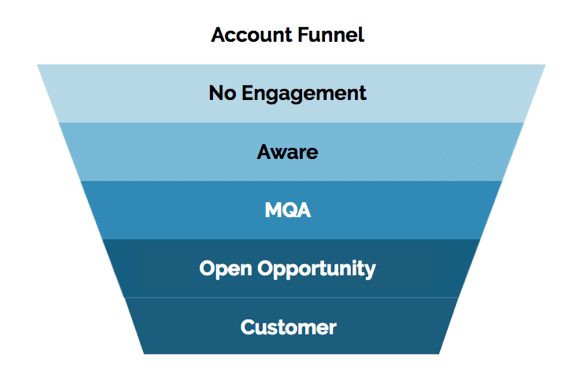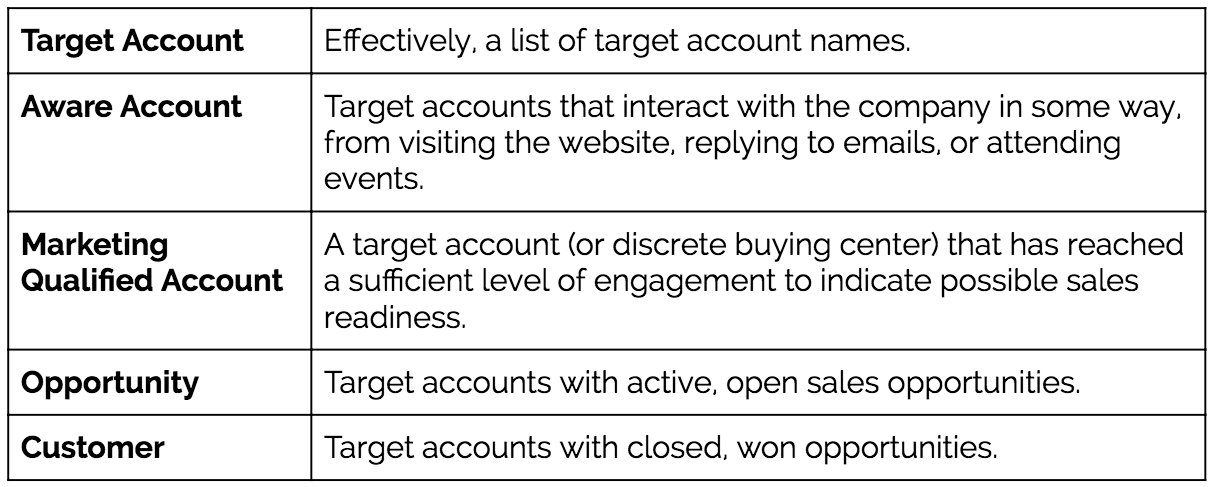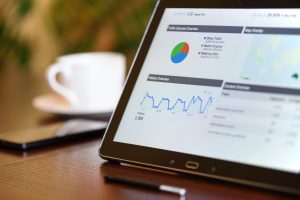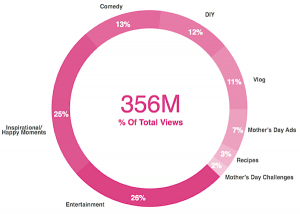— March 7, 2018

Traditional sales methodologies lay the foundation for sales best practices. Following them will give you visibility into a prospect’s movement between sales stages and help you answer important questions about the status of a deal.
Journey analytics achieve the same function for Marketing. They define how accounts move through defined stages toward intended outcomes and give marketers metrics to manage their process with rigor.
In short, journey analytics define stages of customer journeys, track progress toward intended outcomes, and measure key metrics including balance, flow, conversion, and velocity.
There are different ways to look at account journeys:
- From prospect account to new customer
- From existing customer to renewed customer
- From existing customer of one product to new customer of another product
- Etc.
Let’s take a close look at the the #1, going from prospect account to new customer.
The New Account Journey
Prospect accounts go through defined stages on journeys towards becoming new customers.

Dotted boxes indicate stages of the prospect-to-customer journey.
Though account stages differ across businesses, this is what it looks like at Engagio. We tend to like the funnel orientation of the stages, thus the account funnel. You can use this as a starting point and base your framework off of something similar.

Funnel stages most target accounts go through.
This is a new journey that a target account goes through. It’s simple but effective. It’s focused on the top of the funnel, and the stages that are emphasized are those that Marketing can influence.
Here’s a quick rundown of the definitions for each stage.

The other great thing about this funnel is that it’s a closed loop. We track when target accounts have Opps, and we celebrate when they become customers.
Executive especially love seeing the high-level categories laid out like this, but your Marketing Ops team may prefer a different orientation. Here’s the same chart but displayed as a flow.

Here we can indicate which stages follow which other stages and capture a more cyclical nature of this system.
We’ve created a short worksheet to help develop an account-centric model for your business. Simply make a copy this presentation, then start filling in the steps of the journey that make the most sense for your business.
Measuring Progress on Account Journeys
Once you define your funnel stages, you can begin to track and measure journeys with four key metrics: flow, balance, conversion rate, and velocity.
Flow: the type of data that changes over time and refers specifically to accounts moving or “flowing” through the account stages over time.
Sample metrics:
- Number of accounts that move into a stage
- Dollar value of accounts that move into a stage
Questions it will answer:
- How many MQAs did we create this month?
- How many Opportunities did we create over time?
- What is the value of sales pipeline generated?
- How much do we invest for each Opportunity?
Balance: the number of accounts in a particular stage at any one point in time.
Sample metrics:
- Number of accounts in each stage
- Dollar value of accounts in each stage
Questions it will answer:
- How many Target Accounts are Engaged?
- How many open Opportunities are there?
- Are these trending up or down?
Conversion Rate: the rate at which accounts that move from one stage to another.
Sample metrics:
- Percent of accounts that move from stage 1 to stage 2
Questions it will answer:
- What percentage of target accounts become Opportunities?
- What percentage of MQAs become Customers?
- What type of Accounts convert the best?
Velocity: the number of days it takes a deal to move between any two stages.
Sample metrics:
- Average number of days between any two stages
Questions it will answer:
- How long does it take to move an Account from MQA to Opportunity?
- Do certain types of Accounts move through the funnel faster than others?
- What is the average time spent in each stage?
- What is the total funnel time?
To learn more about how to map account journeys, connect marketing programs to revenue and get started with ABM, read Engagio’s new Clear and Complete Guide to ABM Analytics.
Business & Finance Articles on Business 2 Community
(73)
Report Post





